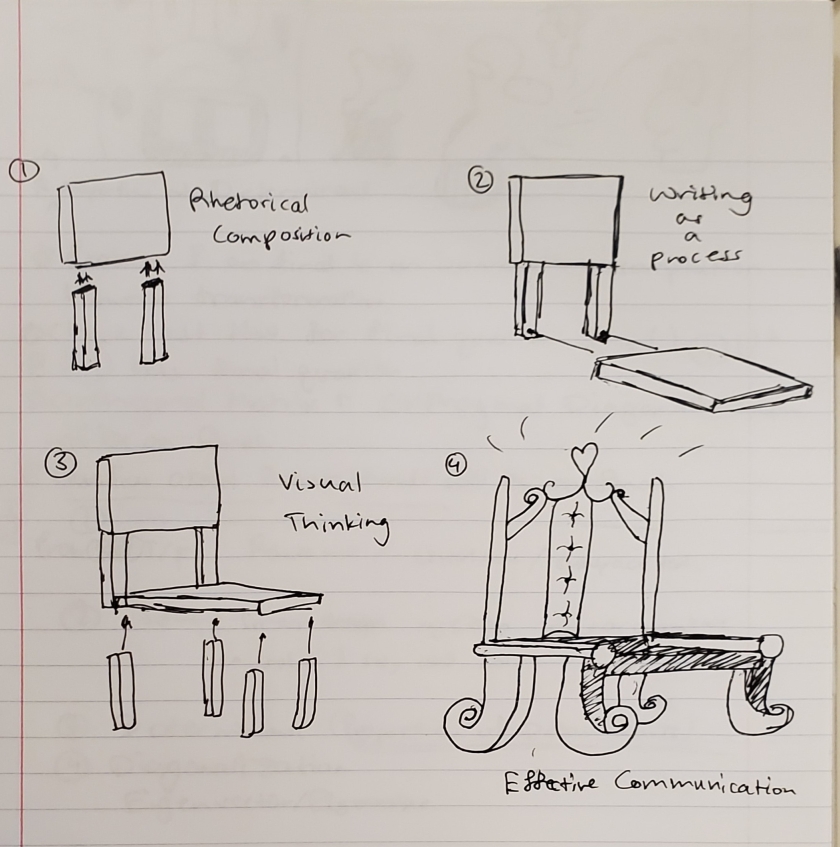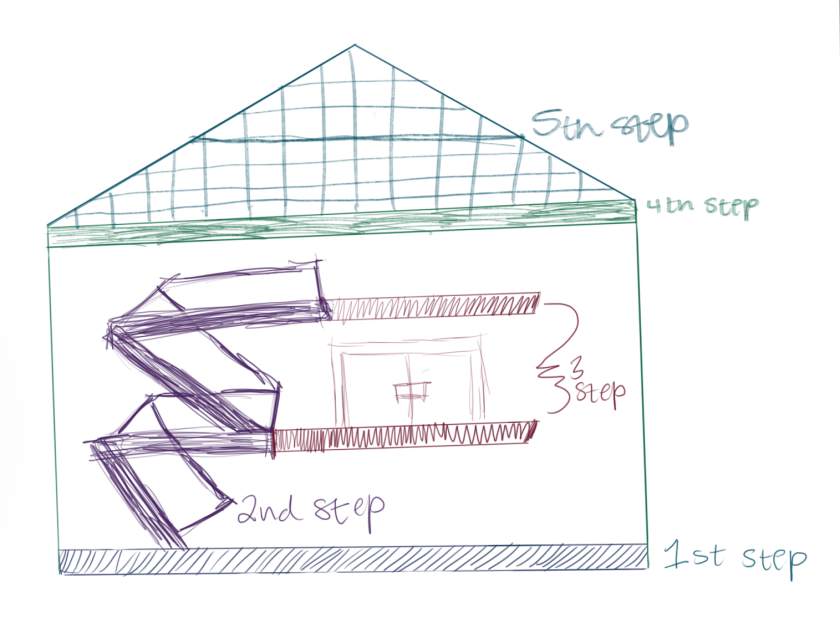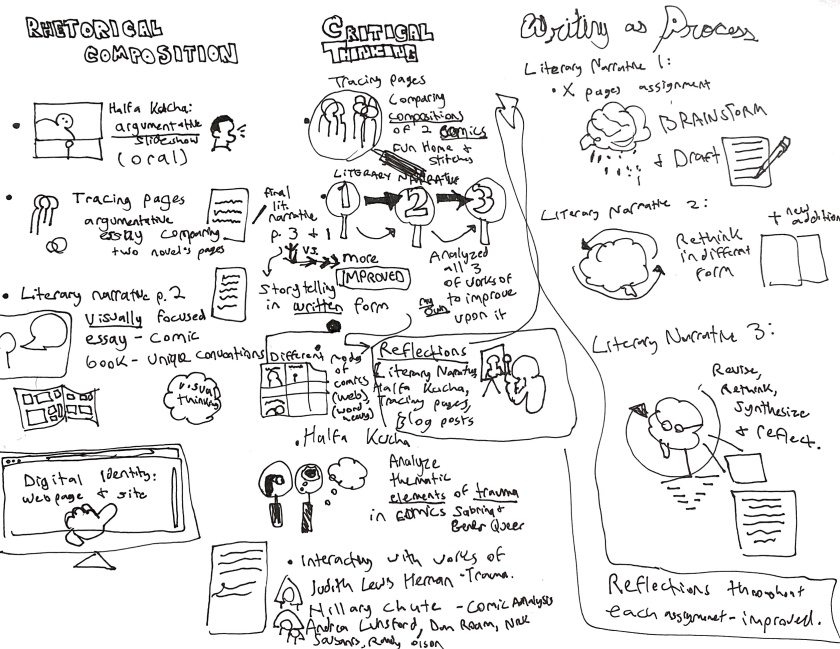An Assembly of an Experience

ENGRD101.24. Spring 2022. Emory University


I drew an assembly of a house to express what I learned this semester about as a writer and reader. It is a very basic idea, but it does a very good job of showing my time during this english course. The first step shows the foundation, which at the beginning of class was very minimal. However, as I read the assigned readings, I had a stronger understanding of what exactly a comic is and how its used as a medium. The second step is the building of the steps. I think that they represent how the assignments grew in difficulty. When I say difficulty, I mean that it took me a lot longer to start the assignments because it became a lot more of a challenge in terms of coming up with ideas to complete the Sunday sketch assignments and the literacy narratives. The third step helps represent that after every challenge there was a period of understanding. The 4th step represents being able to encompass everything that I have learned to be able to close off the class with assignments such as the Halfa Kucha. The fifth steps kind of represents how the comics read helped me visually and literary see how what I have learned in the previous steps come together in many forms.

The process of creating this cumulative ENGRD learning chart was fairly tedious. At first, I didn’t even know where to begin: what format or images I wanted to use. I tried drafting a few hand-drawn sketches but eventually decided to go the digital route and use pixlr. I used a blank comic format for obvious reasons, and over an hour, I assembled a few photos that I thought represented the learning goals for this class.

In this portfolio analysis, I compartmentalized the three main writing course goals and compared their intersections with one another, using diagrams and class assignments as evidence. In my final portfolio letter, I will expand upon these backbone claims with quotes and evidence from these given assignments.
As a person who listens to many songs, I have various playlists for different situations. There are playlists that I listen to when I work out, study, and relax. For this playlist, the rhetorical situation I am engaging with is the emotions I have at night, and I’ll never get tired of. Usually, at night people tend to get emotional. During this time, I like to listen to this playlist, remain rational, and stay motivated. In order for the songs to be part of this playlist, they should contain catchy and meaningful lyrics.
The album cover is a picture of a view from my house, which has a beautiful skyline at night. Even though it’s not the best photo to represent “night,” I chose to use it as the cover of my playlist as it is one of my favorite photos and represents the colors of my songs being dark but also bright.
The full version of the playlist is about 2 hours, but I had to cut it down as half of it contained Korean songs.
The start of the Halfa Kucha project was similar to that of an essay. First, I chose two books: that being Stitches and Sabrina. Then, I organized the analysis points that I wanted to address in my planning document.
However, it did not take long until I realized that each of my points was too long to squiz in 20 seconds and too few to make 10 slides. Then I reformated it so that it would have 1 starting slide, 4 slides of why or how characters obtained trauma, and 5 slides of how characters recovered from it.
After I finalized the outline, I had to select pages of the book that corresponded to the points. It was possible to write points first and select the pages as I remembered the content of the books pretty well.
With specific points and pages for each slide, I was able to write a script. This was relatively easiest and took the shortest. However, as I started to record myself, I had to dedicate much in summarizing the content. All of the words in the script seemed meaningful to me, so the process of eliminating some of them was a painful backbreaker. I believe this was the main difference between the Halfa Kucha and a normal essay.
In terms of the design for the slides, I did not feel much need to dedicate much as the photos from the comic decorated them. Rather, for slides that I used many photos, I tried to make them seem uniform.
Although the specific format of Halfa Kucha – 20sec per slide and 10 slides total – was new to me, sometimes being uncomfortable and unfamiliar in doing the project, I believe it had some advantages after all. It helped me make a concise argument without any euphuistic phrases. As each point generally ended in one slide, I believe it was easier to understand for the audience too.